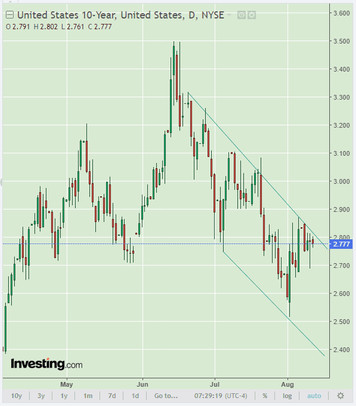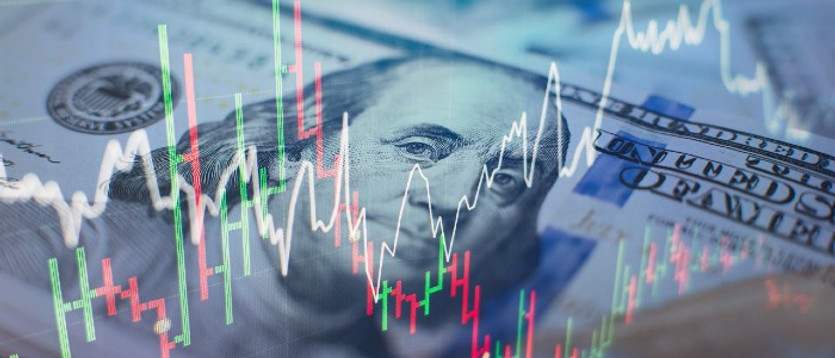The US Bureau of Labor Statistics' inflation report released yesterday (at 12:30 GMT) triggered a sharp weakening of the dollar.
The DXY dollar index fell yesterday to 104.52, the lowest level since the beginning of July, breaking through support at 106.00, 105.00.
According to the data presented, the consumer price index came out with a value of 8.5% (on an annualized basis), which was lower than the forecast of 8.7% and the previous value (in June) of 9.1%. Core CPI (excluding food and energy prices) remained unchanged at 5.9%, which was also below the forecast of growth to 6.1%.
Weaker inflation data significantly dampened expectations for a larger Fed rate hike, putting pressure on the dollar.
Now, according to the CME Group, the likelihood of a 75bp Fed rate hike fell to 35% in September from 80% (before the publication of the CPI index), which also affected the yield of US Treasury bonds, causing it to sharply decline. Thus, the yield of 10-year US Treasury bonds popular with investors fell yesterday to an intra-week low of 2.688%, and currently stands at 2.777%, which also corresponds to 3-month lows.

Meanwhile, some economists warn that excessive pessimism about the dollar, which fell yesterday on weaker CPIs, may not be entirely appropriate, citing lingering geopolitical risks, given also the upcoming US midterm elections this fall.
One way or another, inflation in the world and the US remains high, which will put pressure on the Fed to raise interest rates, albeit at a slower pace, and this is a bullish factor for the dollar.
In particular, the head of the Minneapolis Fed, Neil Kashkari, said yesterday that he “does not see anything that would change” the need for the Fed to raise the discount rate to 3.9% by the end of the year and to 4.4% by the end of 2023, and the head of the Chicago Fed Charles Evans called inflation "unacceptably" high.
Probably, at the meeting on September 20-21, the Fed will raise the rate by 0.50%, and not by 0.75%, as previously thought. Still, this is a relatively large (for the Fed) step in the rate hike cycle: the Fed usually prefers to move in smaller increments, changing the interest rate level by 0.25% at a time.
Thus, after yesterday's sharp weakening, we will soon be able to see a new cycle of dollar strengthening, and the breakdown of the local resistance levels of 106.00, 107.00 will be a signal to resume long positions in DXY futures.
As for the news for today, it is worth paying attention to the publication at 12:30 of a block of American macro statistics. In particular, some slowdown in producer price growth is expected in July: +0.2% (+10.4% yoy) after rising +1.1% (+11.3% yoy) in June. The US Department of Labor will also present a weekly report with data on the number of applications for unemployment benefits. If their number grows, as expected, in the reporting week (until August 5), then this may have a negative impact on the dollar.





